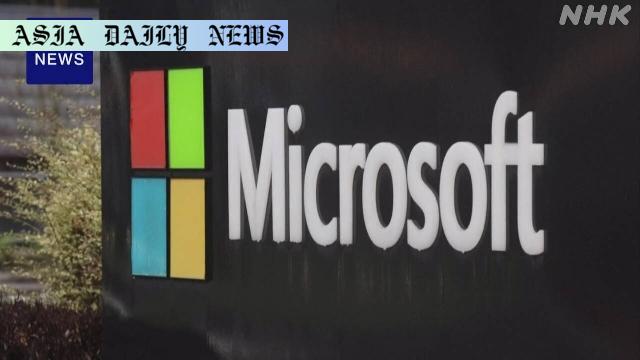Microsoft layoffs: US tech giant announces 9,000 job cuts in second wave of layoffs this year to focus on AI and streamline operations.
Microsoft announces second round of layoffs this year, cutting 9,000 jobs.
Efficiency enhancement and AI development cited as key reasons.
Microsoft’s workforce reduction equates to less than 4% of their total staff.

Introduction: Microsoft’s Workforce Transformation
As global corporations aim to stay competitive in an ever-changing landscape, Microsoft, a behemoth in the technology industry, has unveiled its latest strategy for keeping pace with demand and ensuring long-term growth. On Wednesday, Microsoft revealed plans to cut 9,000 jobs as part of its ongoing restructuring efforts to enhance operational efficiency and focus on emerging technological priorities, such as artificial intelligence. This marks the second major wave of layoffs this year, underscoring the competitive pressures and high-spending challenges that tech companies face today.
Microsoft’s Decision: A Focus on Efficiency and Innovation
This latest workforce reduction accounts for less than four percent of the total employee base, which stood at approximately 228,000 as of June 30, 2024. Microsoft previously laid off 6,000 employees in May, signaling that the company is making a concentrated effort to streamline its operations. The layoffs will target areas where redundancy exists, including managerial roles, to create leaner hierarchies that allow for more agility in decision-making processes. Officials have hinted that these steps are critical in positioning the company for success as they adapt to market changes and intensify their investments in cutting-edge technologies like AI.
The Role of AI in Microsoft’s Strategic Shift
Artificial intelligence has become a cornerstone of innovation for tech giants, and Microsoft is no exception. The company is heavily investing in AI-driven solutions that promise to reshape industries, ranging from automation to personalized consumer experiences. However, such advancements come at a cost. US media reports suggest that Microsoft’s restructuring aims to prioritize funding for AI research and development, as escalating spending on emerging technologies has placed financial strain on companies. The adoption of AI tools internally by Microsoft may also be contributing to increased operational efficiency, enabling reductions in workforce while maintaining productivity levels.
The Impacts on Microsoft’s Workforce and Industry
While the layoffs signal Microsoft’s pragmatic approach to resource allocation, the decision is likely to have ripple effects within the workforce and the tech industry overall. Layoffs are never easy for employees, and this move will affect thousands of workers directly, many of whom may face challenges in finding new opportunities amid a market rife with redundancies from similar layoffs at rival firms. Nevertheless, analysts argue that Microsoft’s focus on AI and efficiency positions it strongly to compete in a futuristic marketplace defined by automation and transformation.
Conclusion: Balancing Innovation and Workforce Well-being
Microsoft’s decision to implement another round of layoffs highlights the balancing act faced by tech companies striving to innovate while remaining economically viable. Shifting resources toward AI development and operational efficiency aligns with Microsoft’s goals to maintain its place as a global leader in technology. However, the human cost of layoffs serves as a poignant reminder of the challenges faced by employees in such transitions. As Microsoft charts its course, the world will watch closely, not only to witness its technological advancements but also to evaluate how it navigates the human aspects of organizational change.
Commentary
Reflecting on the Implications of Microsoft’s Layoffs
Microsoft’s recent announcement of cutting 9,000 jobs has reignited conversations about the evolving priorities of major tech firms in the face of rapid innovation. While the firm’s leadership emphasizes the need to align resources with growth opportunities, particularly in artificial intelligence, this decision inevitably affects the lives of thousands of employees. The layoffs also raise questions surrounding the responsibility of organizations to balance profitability and workforce stability. From an ethical standpoint, companies like Microsoft must find ways to mitigate the social impact of such large-scale workforce reductions.
The Focus on AI Over Traditional Job Roles
Central to this restructuring process is Microsoft’s focus on artificial intelligence. AI, heralded as the driving force behind the future of technology, offers opportunities to enhance productivity, improve decision-making, and streamline operations. However, it also poses challenges that companies and society at large will need to address. As AI tools fulfill roles traditionally managed by humans, downsizing becomes an unfortunate byproduct. While Microsoft speaks of maintaining a dynamic workplace that can adapt to global challenges, the trade-off between human labor and AI-driven efficiency embodies a complex dilemma for the tech industry.
Learning From Microsoft’s Approach
This development at Microsoft presents a learning opportunity for other organizations navigating a similar terrain. The ability to innovate without wholly forsaking workforce considerations is a delicate balance that requires thoughtfulness at every level of decision-making. How firms communicate their vision to their teams, provide severance benefits, and support displaced employees with upskilling initiatives could ultimately define their success beyond technological achievements. For Microsoft, the coming months will be critical in showcasing whether such restructuring will indeed achieve the desired results while preserving its reputation as a leader in the global tech economy.


